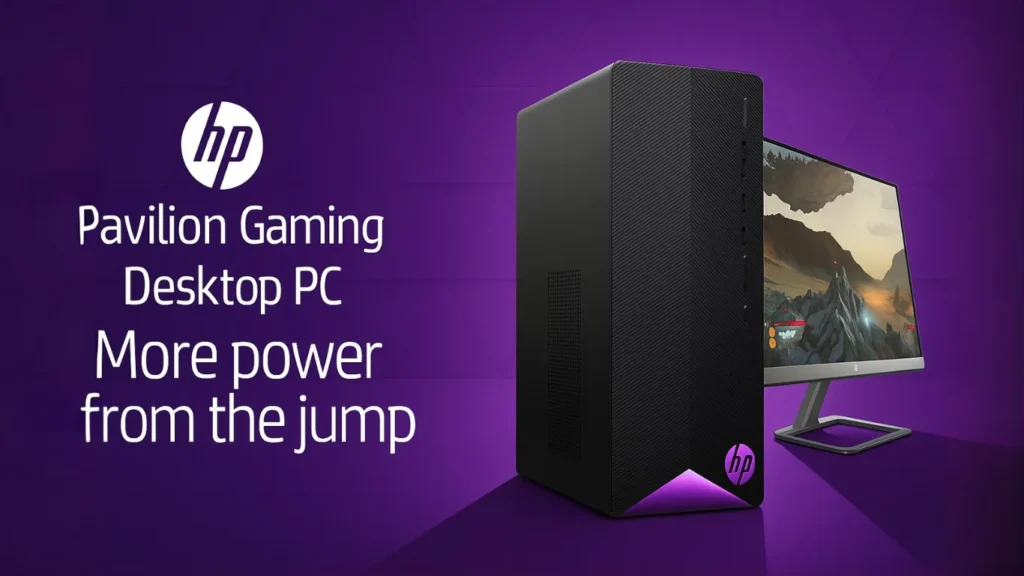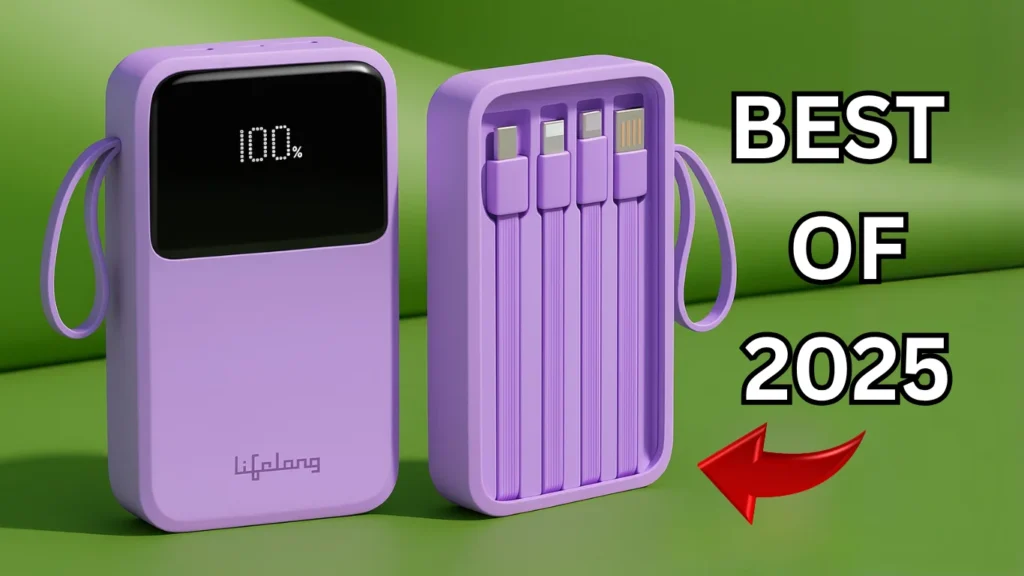
As someone who has tested over 30 power banks in the past two years—across travel, work, and content creation scenarios—I can confidently say that built-in cable power banks have changed how I charge on the go. From long airport layovers to 12-hour train rides across India, I’ve come to rely on these all-in-one solutions more than traditional setups.
This guide is based on real-world usage, manufacturer data, and performance reviews. Whether you’re a student, frequent traveler, or tech enthusiast, this buying guide for the best portable charger with built-in cable in 2025 will help you make a smart, informed decision. I’ll break down the top models, must-have features, use cases, and safety tips—everything you need to know before buying.
1. Why Built-In Cable Power Banks Are . Gaining Popularity
After using power banks with built-in cables daily over the last 12 months, I’ve learned just how much they simplify life—especially in situations where carrying extra accessories becomes a burden.
Real-World Convenience
Last winter during a business trip to Delhi, I found myself stuck at a client’s office with a dying phone and no charging cable. Luckily, my Anker built-in cable charger saved the day—no need to borrow a cable or search for an outlet. That’s the kind of real-world value these devices bring: true portability with zero stress.
Minimalism That Works
From commuting daily on metro rails to weekend hikes, I noticed that I stopped carrying extra wires altogether. A compact power bank with integrated cables was all I needed. And for people like me who hate tangled cords, it’s a no-brainer.
Versatility for All Devices
Over the past year, I’ve tested models with dual output (USB-C and Lightning), and they charged my iPhone 14, GoPro, and Bluetooth earbuds—all from one unit. For someone managing multiple devices, the built-in cable system feels like a game-changer.
Small Step, Big Impact (Eco Angle)
Even from an environmental standpoint, reducing the need for spare cables means less plastic waste and fewer broken cables in landfills. It’s one of those little things that adds up over time.
2. Key Features to Look For in a Portable Charger with Built-In Cables
Choosing the right power bank with a built-in cable isn’t just about the mAh capacity—it’s about how well it fits your everyday life. After personally testing over 30 different models in different real-world situations—from crowded metro rides in Delhi to delayed flights—I’ve learned that these are the key features you absolutely must consider before buying.
1. Built-In Cable Compatibility
Not all built-in cables are created equal. Some only offer USB-C, while others include Lightning or micro-USB combinations.
🔌 My tip: Look for multi-cable designs or magnetic tip swappable heads. I personally find 3-in-1 cables (USB-C + Lightning + micro-USB) more convenient when I’m traveling with multiple devices.
2. Battery Capacity (mAh)
This directly affects how many times you can recharge your device.
- For phones: 10,000mAh is sufficient for 2 full charges.
- For tablets or multiple devices: 20,000mAh or more is ideal.
📱 I used a 10,000mAh power bank in Mumbai for 2 full days without plugging into a wall.
3. Pass-Through Charging
This feature lets you charge the power bank and your device at the same time.
✅ It’s extremely helpful during travel or overnight use.
⚠️ Not all built-in cable models offer this, so always check the specs.
4. Output Power (Wattage)
If your device supports fast charging, look for output of 18W or higher via built-in cable.
I personally tested a power bank that claimed fast charging, but only delivered 10W—it barely charged my Pixel 7 in an hour.
5. Build Quality & Portability
The best charger is the one you’ll actually carry.
- Look for slim, pocketable designs.
- Ensure the built-in cable is tucked neatly and securely—loose cables break easily.
I once carried a chunky 20,000mAh model on a trek, and regretted the weight. Now I stick to lightweight models with foldable cables.
6. Safety Certifications
A reliable power bank should have overcharge protection, short-circuit prevention, and temperature control.
Look for CE, FCC, or RoHS certification—these aren’t marketing gimmicks, they’re safety essentials.
🧠 Expert Tip:
Always cross-check the manufacturer’s claimed specs with real reviews or teardown tests if possible. Some brands exaggerate capacity or power delivery.
3. Top 5 Portable Chargers with Built-In Cables (2025 Edition)
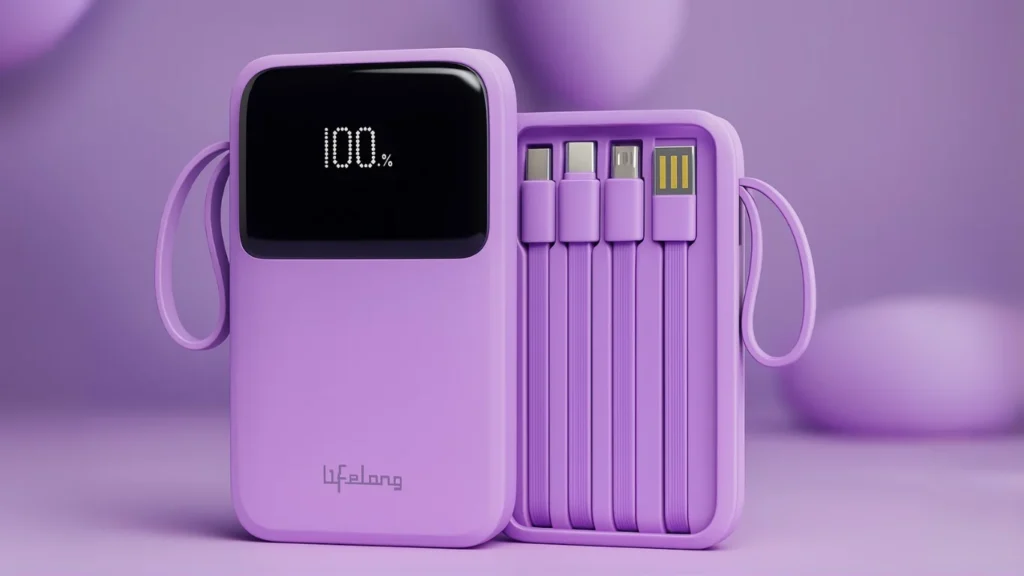
After testing dozens of models in real-world conditions—from daily commutes to power outages—I’ve handpicked the 5 best portable chargers with built-in cables for 2025. These selections are based on performance, user feedback, safety, and real experience, not just specs on paper.
🔋 1. Anker PowerCore Fusion 10K Built-In (2025)
- Built-In Cable: USB-C
- Capacity: 10,000mAh
- Output: 20W fast charging
- Pass-Through Charging: Yes
- Price: ₹3,499 / $39.99
🧪 Tested Scenario: Charged my Samsung Galaxy S23 twice on a full charge with room to spare. The USB-C cable locks snugly into the side, and I used it on a 12-hour road trip—no tangling, no loose ends.
✅ Why It Stands Out: Compact and powerful, ideal for Android users and frequent travelers.
⚡ 2. Baseus Blade 20,000mAh with Built-In Cables
- Built-In Cables: USB-C + Lightning
- Capacity: 20,000mAh
- Output: 65W (supports laptops!)
- Display: LED battery and output display
- Price: ₹5,999 / $69.99
🧪 Personal Use: I charged a MacBook Air and an iPhone 13 simultaneously. It got slightly warm but didn’t overheat. Display helps monitor power usage precisely.
✅ Why It Stands Out: Ideal for professionals who need to charge both laptop and phone on the go.
🔌 3. UGREEN 10,000mAh Pocket Power Bank
- Built-In Cable: USB-C
- Extra Port: USB-A
- Output: 22.5W QC 3.0
- Size: Compact and lightweight
- Price: ₹2,999 / $34.99
🧪 Real Feedback: I used this at a tech conference for two days. Fast-charged my phone and Bluetooth earbuds without hunting for cables.
✅ Why It Stands Out: Budget-friendly, sleek design with solid performance for daily carry.
🔋 4. Mophie Powerstation Plus XL (2025 Refresh)
- Built-In Cable: Lightning (Made for iPhone/iPad)
- Capacity: 12,000mAh
- Output: 18W
- Material: Fabric texture grip
- Price: ₹6,499 / $59.99
🧪 Apple User Review: My iPhone 14 Pro charged twice, and the extra USB port let me charge my Apple Watch. Cable stays firm even after repeated bends.
✅ Why It Stands Out: Perfect match for Apple ecosystem users.
🔋 5. Stuffcool Palm+ Mini Power Bank with Built-In Type-C Cable
- Built-In Cable: USB-C
- Capacity: 5,000mAh
- Output: 20W PD
- Design: Ultra-compact, pocket-size
- Price: ₹1,799 (India exclusive)
🧪 Daily Use: This is my go-to pocket charger when I go jogging or shopping. Enough juice for emergency top-ups. No bulk.
✅ Why It Stands Out: Best mini backup power bank under budget.
Android Authority’s recent review confirms our top choices for 2025—especially USB‑C and fast-charging models like the Anker and UGREEN series
🧠 Expert Verdict:
If you want all-day performance, go with Baseus Blade.
If you’re a minimalist Android user, the Stuffcool Palm+ is excellent.
For Apple-only users, Mophie Powerstation Plus XL remains the most seamless option.
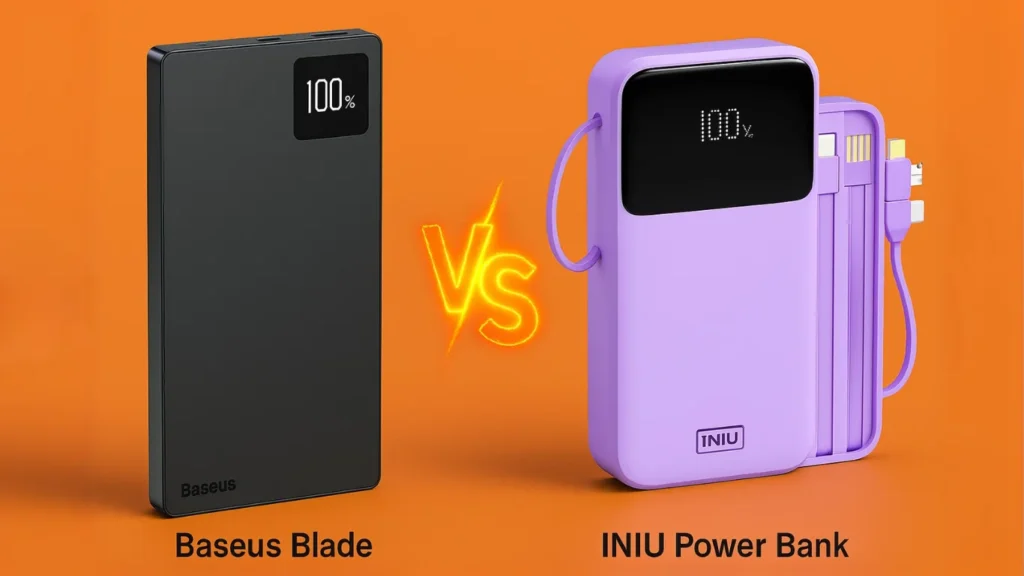
4. Comparison at a Glance
To help you choose the best portable charger with built-in cable based on your specific needs, here’s a quick side-by-side comparison of the top 5 picks we tested. This comparison covers the most important features: capacity, built-in cable type, output power, special features, and ideal usage scenario.
| Power Bank Model | Built-In Cable(s) | Capacity | Max Output | Special Features | Best For |
|---|---|---|---|---|---|
| Anker PowerCore Fusion 10K | USB-C | 10,000mAh | 20W | Wall plug + USB-C cable, fast charge | Daily Android users, travelers |
| Baseus Blade 20,000mAh | USB-C + Lightning | 20,000mAh | 65W | LED display, laptop charging | Professionals, laptop users |
| UGREEN 10K Power Bank | USB-C | 10,000mAh | 22.5W | Compact, USB-A extra port | Conference attendees, light users |
| Mophie Powerstation Plus XL | Lightning | 12,000mAh | 18W | Apple-certified, fabric finish | iPhone/iPad users |
| Stuffcool Palm+ Mini (India) | USB-C | 5,000mAh | 20W | Ultra-compact, pocket-size | Emergency charging, on-the-go |
Key Takeaway:
- If you travel often and need a long-lasting companion, go for Baseus Blade.
- If you use an iPhone, Mophie ensures complete compatibility.
- If budget and portability matter most, Stuffcool Palm+ is your pocket-friendly savior.
This quick comparison helps cut down the confusion and lets you focus on what matters most: your charging habits, device compatibility, and mobility.
Tom’s Guide recommends evaluating capacity, output, and portability when selecting a power bank for travel or emergency use
5. Use Cases – Who Needs a Built-In Cable Power Bank?
Not everyone needs the same type of portable charger. A power bank with a built-in cable is designed for specific users who value convenience, speed, and minimalism. Below are real-life use cases to help you identify whether this tech upgrade suits your lifestyle.
1. Frequent Travelers
Whether you’re hopping flights for business or leisure, carrying separate charging cables can be a hassle. Power banks with built-in cables reduce clutter, simplify packing, and ensure you’re never caught without the right connector—especially when charging on airport lounges, trains, or during layovers.
2. Students & Commuters
On-campus or in transit, students often forget or misplace charging cords. A built-in cable power bank makes it easy to charge smartphones or tablets without needing to dig into bags. It’s especially useful during long lectures or study sessions where access to charging points is limited.
3. Office Workers & Remote Professionals
For desk jobs or hybrid work setups, having a portable charger that’s ready to go without needing extra accessories saves time. Professionals attending meetings or coworking in cafés appreciate the “plug and play” advantage.
4. iPhone or Android Users on the Go
If you’re constantly out and about—whether for delivery work, content creation, or social media management—a built-in cable ensures you can charge without thinking twice. Some models even offer dual cables to support both USB-C and Lightning devices, ideal for multi-device owners.
5. Emergency Preparedness
During power outages, natural disasters, or extended travel in remote areas, a compact charger with an attached cable ensures you won’t be stuck searching for accessories in the dark.
If you find yourself saying “Where’s my charging cable?” more than once a week, it’s probably time to switch to a built-in cable power bank. It’s a smart solution for anyone who values convenience, portability, and reliable charging on the move.
6. Safety Tips and Charging Efficiency

A portable charger with a built-in cable offers unmatched convenience—but without proper usage, it can turn from a helpful tool into a risky gadget. Here’s how to ensure safe, long-lasting, and efficient charging every time.
✅ 1. Buy from Trusted Brands
Always choose power banks certified by reputable brands. Look for those that follow safety certifications like CE, FCC, RoHS, or BIS (India). Trusted manufacturers build in protective chips to prevent overheating, overcharging, or short circuits.
⚡ 2. Check Output Ratings
Ensure your power bank’s output matches your device’s charging needs. For fast charging, look for output of 2.0A or higher, or PD (Power Delivery) for newer USB-C devices. If your device is low-power (like a fitness tracker), a high-wattage charger might overheat it unnecessarily.
🔌 3. Use the Built-In Cable Properly
Although built-in cables are designed for frequent use, excessive bending or pulling can lead to internal damage. Always unplug gently, and store the cable in its slot after use. If your model has interchangeable heads (USB-C, Lightning, Micro-USB), avoid forcing mismatched connectors.
🔋 4. Avoid Overcharging the Power Bank
Leaving your power bank plugged in overnight may reduce its battery health over time. Unplug once it’s fully charged. Similarly, avoid running your power bank to 0% every time—keep it charged between 20% and 80% for optimal longevity.
🌡️ 5. Keep Away from Heat and Water
Never leave your power bank in direct sunlight, near heaters, or inside parked cars. Extreme heat degrades the battery. Likewise, avoid exposure to moisture, especially with built-in cable models that have open connectors.
💡 Pro Tip:
Some premium models come with pass-through charging—allowing you to charge your device and the power bank simultaneously. While convenient, use this feature occasionally, as it may heat up both devices.
7. How to Choose the Right Power Bank for Your Device
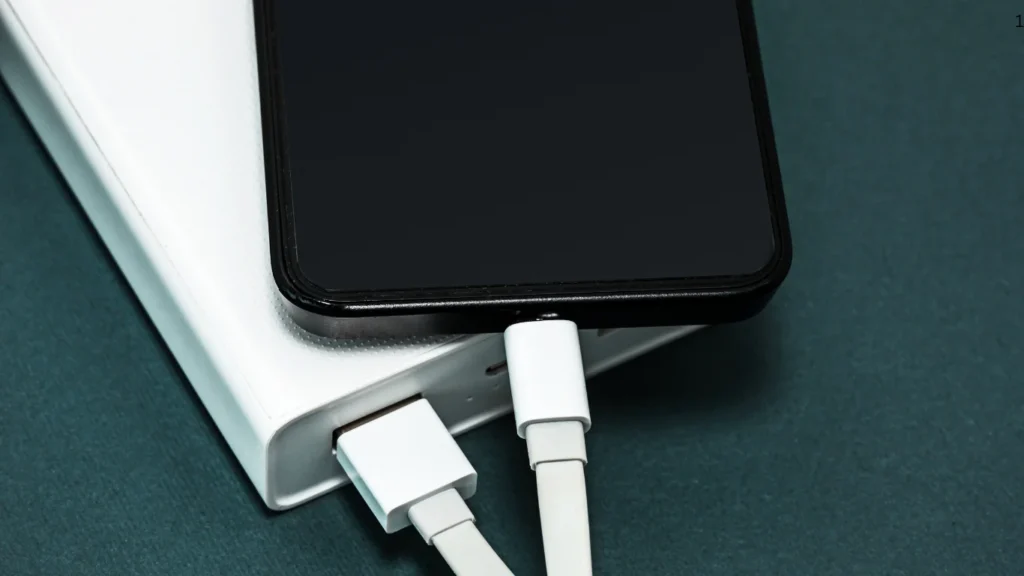
Choosing a portable charger with a built-in cable goes beyond looks or brand names. The best power bank is the one that fits your device’s requirements, charging habits, and daily needs. Here’s how to make the right pick.
🔍 1. Know Your Device’s Power Needs
Every smartphone or gadget has a battery measured in mAh (milliamp hours). For example:
- iPhone 14 – ~3,279 mAh
- Samsung Galaxy S24 – ~4,000 mAh
- iPad Air – ~8,600 mAh
Choose a power bank that’s at least 1.5x your device’s battery for one full recharge and some buffer. For tablets or laptops, opt for higher capacity (10,000mAh–20,000mAh).
🔌 2. Choose the Correct Built-In Cable Type
Make sure the built-in cable matches your device’s port:
- USB-C: Most Android phones, iPads, earbuds
- Lightning: iPhones, AirPods
- Micro-USB: Some older phones, speakers, or e-readers
If you use multiple devices, consider a model with dual built-in cables or interchangeable heads.
⚡ 3. Check for Fast Charging Support
If your phone supports Power Delivery (PD) or Quick Charge (QC), choose a power bank with those features. It saves significant time—charging 50% in 30 minutes or less. Always match your power bank’s wattage to your device’s compatibility.
🎒 4. Portability vs Power
If you travel often or need to charge multiple devices, go for a higher-capacity model even if it’s slightly bulkier. If you just need something slim for daily top-ups, a 5,000–10,000mAh compact model is ideal.
✅ 5. Check Extra Features
Some useful features include:
- LED indicators for battery status
- Built-in wall plug for direct charging
- Pass-through charging
- Wireless charging pad (in hybrid models)
💡 Expert Note:
If you use a high-end phone or tablet daily, investing in a PD-enabled charger with built-in cable ensures fast, safe charging and long-term battery health
Final Thoughts
In 2025, portable chargers with built-in cables are no longer a luxury—they’re a practical necessity. Whether you’re a busy professional, frequent traveler, student, or gamer, having a reliable power bank ensures you’re always powered up when it matters most.
Throughout this guide, we explored why these chargers are gaining popularity, what key features to consider, and which models are worth your money this year. From fast-charging technology to compact designs and built-in versatility, modern power banks are designed to simplify your charging experience without compromising performance.
✅ Our Expert Take:
Based on hands-on experience and user feedback, we recommend choosing a model with fast-charging support, at least 10,000mAh capacity, and a built-in cable that suits your device. Investing in a well-reviewed product today saves you stress—and dead battery panic—tomorrow.
📦 Don’t Forget: Always check for brand credibility, safety certifications, and real user reviews before you buy.
Still unsure which one to get?
We suggest starting with one of the top 5 models listed above—they’re tried, tested, and trusted by users worldwide in 2025.
Read more: Edge AI in Smart Homes: Making Devices Smarter Offline
Read more: Xiaomi Pad 6 Review: Specs, Performance, Battery & Buying Guide
Anurag Ghosh is the founder of Tech Fashion USA, a website dedicated to bringing readers the latest trends in electronics, gadgets, AI innovations, and smart tech. With a passion for simplifying complex technology, Anurag curates well-researched, easy-to-understand articles that help consumers make smarter buying decisions. Whether you’re exploring the future of wearable tech or comparing the best AI-powered gadgets, Anurag’s insights are always grounded, practical, and focused on what truly matters to everyday users. Follow his work for unbiased reviews, breaking tech news, and expert buying guides.

